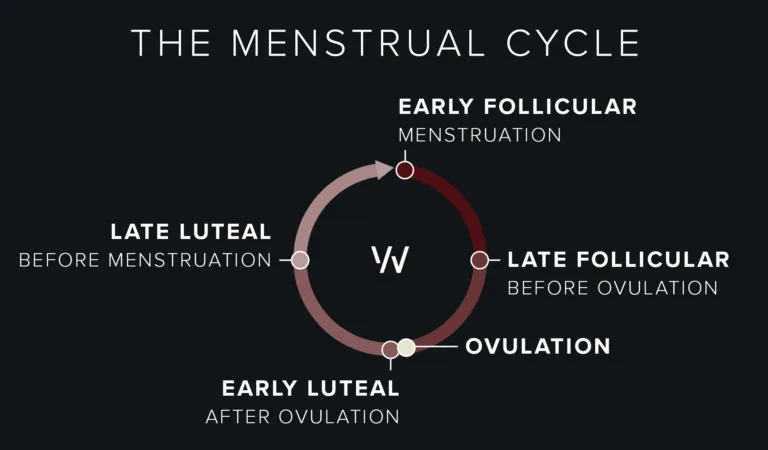Topics
- Article
- Training & Exercise
- Women’s Performance
Why You Should Work Out During Your Period

Working out during your period can help you build muscle faster with better recoveries the next day and may decrease your worst symptoms.
Working out during your period may seem like a non-starter for some of us. We’d rather lie on the couch with a heating pad, but exercising may just be the best thing you can do to relieve the worst of your symptoms.
Benefits Of Exercising On Your Period
First off, the endorphins your body releases during exercise help reduce your perception of pain and trigger positive feelings. If you usually feel down or suffer from menstrual cramps, working out can reduce cramping and boost your mood. Aerobic activity before your period can relieve PMS symptoms in the same way. Secondly, you can gain more muscle during your period than at any other phase of your cycle, according to Dr. Stacy Sims, who collaborated with the WHOOP data science team on a study that uncovered key differences between natural menstrual cycles and hormonal birth controlled menstrual cycles. “Physiologically, your body is primed to hit it hard,” Dr. Sims said during a recent AMA with WHOOP members. Sims added that it was a myth that you shouldn’t work out during their periods. WHOOP research found that in naturally cycling individuals (not using hormonal birth control), heart rate variability (HRV) and recovery are elevated in the early and mid-follicular phases. During this phase, estrogen levels are low. High estrogen levels increase vagal activity and decrease sympathetic activity, but low levels mean these systems are more prepared for fight or flight instead of pregnancy. Your body is resilient to stress during your period, so you can work out harder while having better recoveries the next day. During the follicular stage (starting with your period and ending with ovulation) your body can better access carbohydrates from your diet, your HRV is generally higher and you can get more REM and deep sleep. This all adds up to stronger recoveries and the ability to perform the next day.

This chart shows the phases of a normal menstrual cycle.
The Best Time to Train Hard and Get Results
Your period is the ideal time to get aggressive with your workouts and strength training. Try high-intensity interval training (HIIT) or plyometrics. Stack on the weights and do heavy resistance anaerobic training. If your period symptoms hinder you from training, listen to your body, but, you should still try to get some exercise in, even if it’s short. “Try a few short bursts of sprint interval training,” Dr. Sims suggests. “Something like 20 seconds all out 5-8 times with 2 minutes’ cruise between, then call it. The super-intense work will increase post-exercise anti-inflammatory responses, release endorphins, and because it is short, it is not as taxing mentally or physically as doing a full structured workout.” But if you’re afraid of trying training based on what you’ve been told in the past about periods, Dr. Sims says to ignore the misconceptions and look at the latest science. “Don't let the myths get to you! If you feel like hitting it hard, go for it! Your body can handle it and your training potential will thank you.”
Learn How Your Period Affects Workouts with Menstrual Cycle Coaching
WHOOP can help you learn more about how your menstrual cycle affects your sleep, HRV, and recovery when you track it in the WHOOP Journal. If you have a natural cycle the Menstrual Cycle Insights feature can track your cycle and make personalized sleep and strain recommendations based on your daily recovery metrics and what phase of your cycle you’re in. For example, in the late luteal stage, the week before your period, you may get poor sleep along with other symptoms that can affect your recovery. On those days, Menstrual Cycle Coaching will suggest an active recovery day, or taking a break altogether. WHOOP monitors your sleep, HRV, resting heart rate, blood oxygen, and skin temperature to help you track your daily performance and recovery, as well as how they are affected by your menstrual cycle.